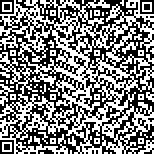|
|
| |
|
|
| 本文已被:浏览 1319次 下载 1667次 |

码上扫一扫! |
|
|
| 镉致鲫(Carassius auratus)外周血单个核细胞DNA损伤与增殖抑制 |
|
丁磊1, 黄鹤忠1, 吴康1, 张伟明2, 时夕金3, 周建华3
|
|
1.苏州大学农业科技学院 苏州215006;2.苏州市水产研究所 苏州215107;3.苏州大学核医学院 苏州215006
|
|
| 摘要: |
| 采用体内注射染镉的方法进行镉诱导鲫外周血单个核细胞(PBMC)DNA损伤与增殖抑制相关性的研究。将鲫(400g/尾)驯养4周后进行随机分组,每组5尾,以Cd2+浓度1.25、2.50和3.75mg/kg腹腔注射染鲫,以生理盐水腹腔注射鲫为对照,染镉后0、3、5、7、10和14天取无菌抗凝鲫血,经淋巴细胞分离液离心分离获取PBMC,用单细胞凝胶电泳法检测PBMC的DNA损伤,用3H胸腺嘧啶脱氧核苷掺入法检测PBMC的增殖。结果表明,3天时各染镉组DNA迁移度增加,5天时继续加大并于7天时达到峰值,10天和14天时呈现逐渐减小的趋势。1.25mg/kg组与对照组在不同时间放射性活度(dpm)的差异均无显著性;0天和3天时各染镉组与对照组dpm的差异均无显著性;5天时2.50和3.75mg/kg组dpm明显下降,7天和10天时dpm与5天时基本相同,14天时dpm呈上升趋势。镉诱导DNA损伤与其抑制PBMC增殖相比,作用时间短且浓度低,初步推测镉诱导的DNA损伤是镉抑制PBMC增殖的重要机制之一。 |
| 关键词: 镉 鲫 外周血单个核细胞 DNA损伤 增殖抑制 |
| DOI: |
| 分类号: |
| 基金项目:科技部农业科技成果转化基金,02EFN213200220号;江苏省科技发展资助项目,BS2002016号;苏州市科技局资助项目,SNT0405号;苏州大学校青年基金资助项目,Q3113401号 |
|
| CADMIUM INDUCED DNA DAMAGE IN PERIPHERAL BLOOD MONONUCLEAR CELLS AND PROLIFERATION SUPPRESSION IN CRUSSIAN CARP CARASSIUS AURATU |
|
DING Lei1, HUANG He-Zhong1, WU Kang1, ZHANG Wei-Ming2, SHI Xi-Jin3, ZHOU Jian-Hua3
|
|
1.College of Agricultural Science and Technology, Suzhou University, Suzhou, 215006;2.Suzhou Fisheries Institute, Suzhou, 215107;3.College of Nuclear Medicine, Suzhou University, Suzhou, 215006
|
| Abstract: |
| In the paper, the author studied for the first time the cadmium-induced damage to peripheral blood mononuclear cells (PBMC) of crussian carp Carassius auratus. The correlation of DNA damage with proliferation suppression in these damage cells was also studied. The test fish were intraperitonealy injected with Cd2+ at 1.25, 2.50, 3.75mg/kg to three groups individually, and the control is Cd2+ free. After injection at the 1st, 3rd, 5th, 7th, and 14th day, the PBMC were analyzed by single cell gel electrophoresis (SCGE) with 3H-TdR incorporated. For the SCGE analysis, 10μl of cells have been mixed with 75μl of 0.8% low-melting agarose and incubated at 37°C. These samples were layered on pre-coated slide of 0.8% normal agarose gel, and chilled for 10min at 4°C, and then covered with a layer of normal agarose gel. After they have been immersed in prechilled lysis solution for 3h to remove cellular proteins, above slides were placed in a horizontal electrophoresis unit and incubated in fresh alkaline electrophoresis buffer for 40min to unwind DNA. Before the samples were electrophoresed at 25V (200mA) for 1h, all the above procedures were conducted at 4°C in the dark to minimize possible DNA damage from outer sources. Following electrophoresis, the slides were immersed in neutralization buffer, gently washed twice for 15min at 4°C to remove alkalis and detergents, and then dehydrated with 100% C2H5OH for 1h. EB was added to each slide to stain the DNA, then covered with a slip and kept in the dark in an air-tight moist container before being invested. DNA migration was measured under an Olympus BX-60 microscope with scaled ocular using fluorescent beam source. When light-colored patches, resembling the tail of a comet in pattern, spread out from the cell, migrations were measured by the “tail” length (μm) in the mean of three slides of each fish from 30 randomly selected cells of each slide. Using 3H-TdR incorporation analysis, after have been seeded on 96-well plates (1×105/well) , the PBMC were added with 0.1ml PHA to final concentration of 0.1mg/ml, and cultured for additional 60h at 27°C and 5% CO2 in air, before being added with 0.02ml 3H-TdR to final concentration of 1.85×105Bq/ml. After 12h incubation, the cells were harvested onto 49# glass fiber filters, washed three times in turn by PBS, 5% C2HCl3O2 and 100% C2H5OH respectively. The 3H-TdR incorporation of the cells was measured by LS-6800 liquid scintillation spectroscopy and recorded in dpm. The results are expressed in mean of triplicated cultures from each fish. It was shown that the distance of DNA migration increased at all doses at 3d, and further at 5d, peaked at 7d, then it gradually decreases at 10 and 14d. The values in dpm insignificantly changed all the times in 1.25mg/kg and control groups (P<0.05), and has no large differences in all test groups at 0 and 3d. While the value rapidly dropped at 5d, then stayed between 5–10d, and finally increased at 14d in 2.50, 3.75mg/kg. With cadmium induction, the DNA damage had shorter effecting time and lower Cd2+ concentration than those of the suppression on PBMC. The above results indicated that cadmium could result in DNA damage in vivo, which is probably an important mechanism of the suppression on PBMC proliferation. |
| Key words: Cadmium, Carassius auratus, Peripheral blood mononuclear cells, DNA damage, Proliferation suppression |
|
|
|
|
|
|
